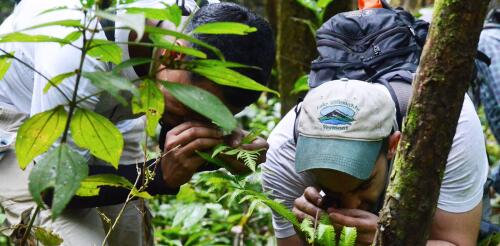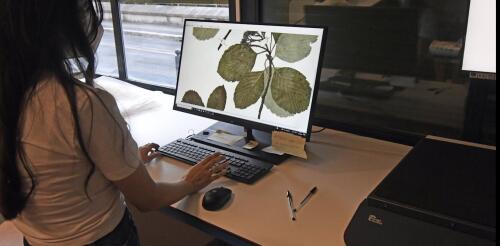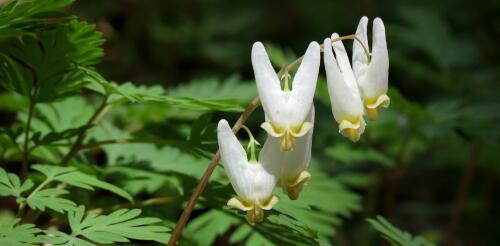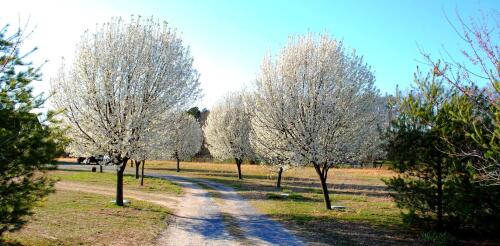Botany
Cranberries are a staple in U.S. households at Thanksgiving – but how did this bog dweller end up on holiday tables? Compared to many valuable plant species that were domesticated over thousands of years, cultivated cranberry (Vaccinium macrocarpon) is a young agricultural crop, just as the U.S. is a young country and Thanksgiving is a relatively new holiday. But as a plant scientist, I’ve learned much about cranberries’ ancestry from their botany and genomics. New on the plant breeding scene Humans have cultivated sorghum for some 5,500 years, corn for around 8,700 years and cotton for about 5,000 years. In contrast, cranberries were domesticated around 200 years ago – but people were eating the berries before that. Wild cranberries are native to North America. They were an important food source for Native Americans, who used them in puddings, sauces, breads and a high-protein portable food called pemmican – a carnivore’s version of an ene...
When you hear about the abundance of life on Earth, what do you picture? For many people, it’s animals – but awareness of plant diversity is growing rapidly. Our planet has nearly 300,000 species of flowering plants. Among animals, only beetles can compete with that number. There are more species of ferns than birds, more mints than mammals, and more beans than butterflies. Measured in total mass, plants make up 82% of all life on land across the globe. We are plant scientists and co-founders of Let’s Botanize, an educational nonprofit that uses plant life to teach about ecology, evolution and biodiversity. In the past several years we have witnessed a botanical boom, with participation in plant-based hobbies surging. From cultivating houseplants to foraging for wild foods and outdoor gardening, plant appreciation is on the rise. Botanizing is spending time alongside plants in order to observe and appreciate them as living organisms – like birding, but w...
Some of the world’s most popular museums are natural history collections: Think of dinosaur fossils, gemstones and preserved animals. Herbaria – collections of pressed, dried plant specimens – are a less-known but important type of natural history collection. There are some 400 million botanical specimens stored across over 3,500 herbaria around the world, but most are not widely publicized and rarely host public exhibits. I study biodiversity and global change, and these collections have fueled my work. My collaborators and I have used herbarium collections to study how flowering times respond to changes in climate, how dispersal traits and environmental preferences affect the likelihood that plants will become invasive, and how fires affect tropical biodiversity. I have had easy access to specimens from every corner of the world, but most researchers are not as lucky. This is partly because herbaria as we know them today are largely a European creation. And...
For short-lived spring wildflowers such as wood anemone (Anemone quinquefolia) and Dutchman’s breeches (Dicentra cucullaria), timing is everything. These fleeting plants, known as ephemerals, grow in temperate forests around the world, leafing out and flowering early in spring before the trees towering above them leaf out. Emerge too early, and it will still be winter; emerge too late, and it will be too shady under the forest canopy for essential photosynthesis to happen. Over their evolutionary history, these plants have figured out the best timing for their survival. But climate change is altering spring growing conditions, and plant life is changing along with it. There are many examples of plants shifting flowering time in response to warming temperatures, such as cherry blossoms opening earlier and earlier each year. However, when one part of an ecosystem shifts, will all the organisms that depend on it successfully shift too? Or will they be out of luck? And what...
When people think of spring, they often picture flowers and trees blooming. And if you live in the U.S. Northeast, Midwest or South, you have probably seen a medium-sized tree with long branches, covered with small white blooms – the Callery pear (Pyrus calleryana). For decades, Callery pear – which comes in many varieties, including “Bradford” pear, “Aristocrat” and “Cleveland Select” – was among the most popular trees in the U.S. for ornamental plantings. Today, however, it’s widely recognized as an invasive species. Land managers and plant ecologists like me are working to eradicate it to preserve biodiversity in natural habitats. As of 2023, it is illegal to sell, plant or grow Callery pear in Ohio and Pennsylvania, and will become illegal in South Carolina on October 1, 2024. North Carolina and Missouri will give residents free native trees if they cut down Callery pear trees on their property. How did this tre...




